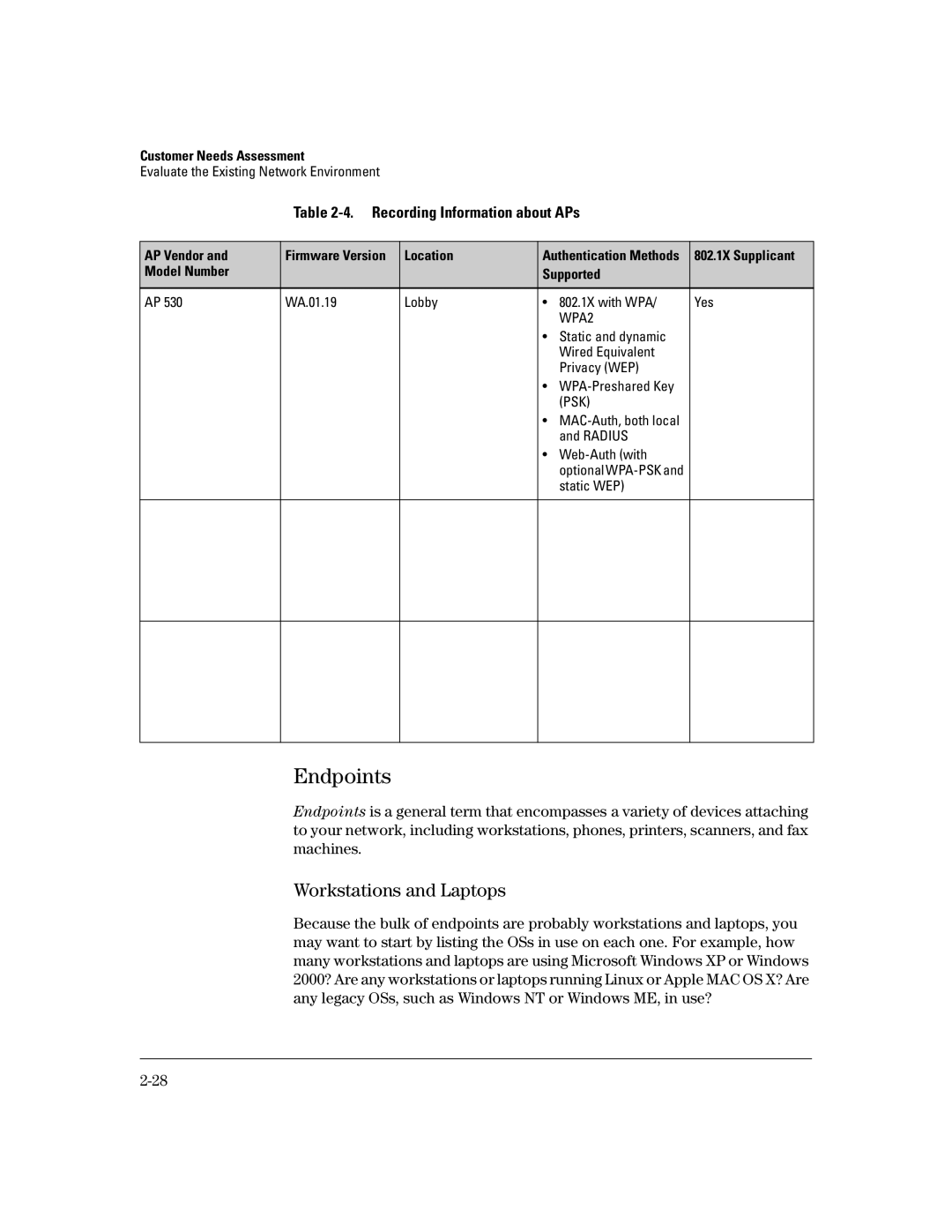
Customer Needs Assessment
Evaluate the Existing Network Environment
Table 2-4. Recording Information about APs
AP Vendor and | Firmware Version | Location | Authentication Methods | 802.1X Supplicant | |
Model Number |
|
| Supported |
| |
|
|
|
|
|
|
AP 530 | WA.01.19 | Lobby | • | 802.1X with WPA/ | Yes |
|
|
|
| WPA2 |
|
|
|
| • | Static and dynamic |
|
|
|
|
| Wired Equivalent |
|
|
|
|
| Privacy (WEP) |
|
|
|
| • |
| |
|
|
|
| (PSK) |
|
|
|
| • |
| |
|
|
|
| and RADIUS |
|
|
|
| • |
| |
|
|
|
| optional |
|
|
|
|
| static WEP) |
|
|
|
|
|
|
|
|
|
|
|
|
|
|
|
|
|
|
|
Endpoints
Endpoints is a general term that encompasses a variety of devices attaching to your network, including workstations, phones, printers, scanners, and fax machines.
Workstations and Laptops
Because the bulk of endpoints are probably workstations and laptops, you may want to start by listing the OSs in use on each one. For example, how many workstations and laptops are using Microsoft Windows XP or Windows 2000? Are any workstations or laptops running Linux or Apple MAC OS X? Are any legacy OSs, such as Windows NT or Windows ME, in use?
